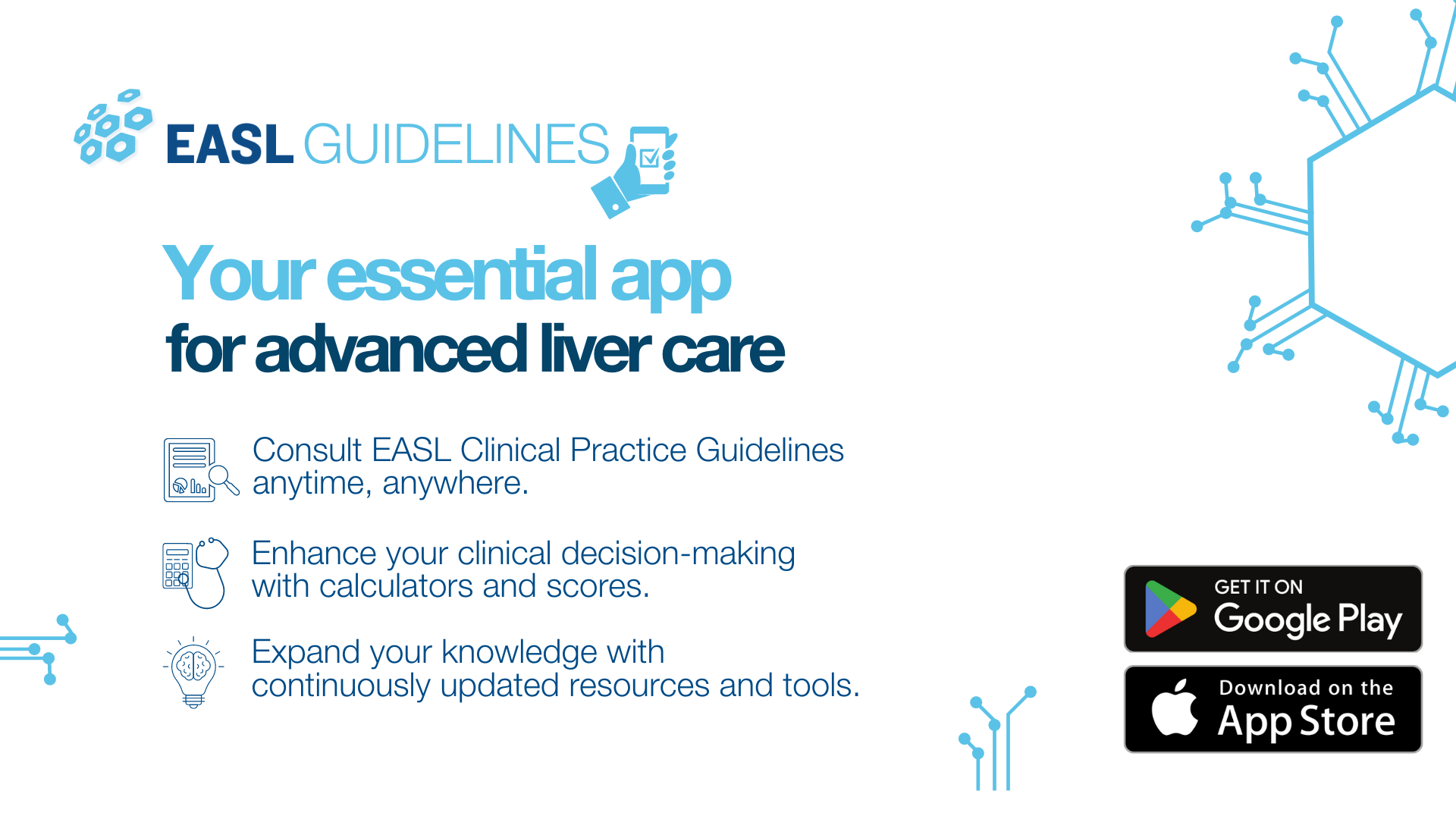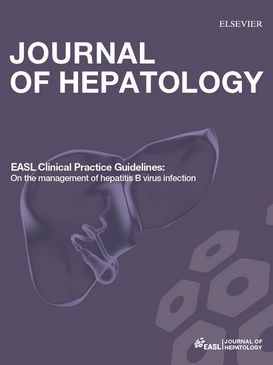EASL’s Clinical Practice Guidelines assist physicians, healthcare providers, patients and other interested parties in the clinical decision-making process. The EASL Guidelines present a range of state-of-the-art approaches for the diagnosis and treatment of liver diseases.

EASL Guideline on Hepatitis B. Hepatitis B virus (HBV) infection remains a global public health problem with changing epidemiology due to several factors including vaccination policies and migration. This EASL Clinical Practice Guideline presents updated recommendations for the optimal management of HBV infection. Chronic HBV infection can be classified into five phases: (I) HBeAg-positive chronic infection, (II) HBeAg-positive chronic hepatitis, (III) HBeAg-negative chronic infection, (IV) HBeAg-negative chronic hepatitis and (V) HBsAg-negative phase.
Read MoreThis guideline is an official statement of the European Society of Gastrointestinal Endoscopy (ESGE) and of the European Association for the Study of the Liver (EASL) on primary sclerosing cholangitis. The Grading of Recommendations Assessment, Development and Evaluation (GRADE) system was adopted to define the strength of recommendations and the quality of evidence.
Read MoreThe term acute liver failure (ALF) is frequently applied as a generic expression to describe patients presenting with or developing an acute episode of liver dysfunction. In the context of hepatological practice, however, ALF refers to a highly specific and rare syndrome. This means an acute abnormality of liver blood tests in an individual without underlying chronic liver disease. The disease process is associated with development of a coagulopathy of liver aetiology, and clinically apparent altered level of consciousness due to hepatic encephalopathy. Several important measures are immediately necessary when the patient presents for medical attention. These, as well as additional clinical procedures will be the subject of the Acute Liver Failure Guidelines.
Read MorePrimary biliary cholangitis (PBC) is a chronic inflammatory autoimmune cholestatic liver disease, which when untreated will culminate in end-stage biliary cirrhosis. Diagnosis is usually based on the presence of serum liver tests indicative of a cholestatic hepatitis in association with circulating antimitochondrial antibodies. Patient presentation and course can be diverse and risk stratification is important to ensure all patients receive a personalised approach to their care.
Read MoreThe Clinical Practice Guidelines propose recommendations for the diagnosis, treatment and follow-up of non-alcoholic fatty liver disease (NAFLD) patients and are the product of a joint effort by the European Association for the Study of the Liver (EASL), European Association for the Study of Diabetes (EASD) and European Association for the Study of Obesity (EASO). They update a position statement based on the 2009 EASL Special Conference. The data have been retrieved by an extensive PubMed search up to April 2015. The final statements are graded according to the level of evidence and strength of recommendation, which are adjustable to local regulations and/or team capacities.
Read MoreBenign liver tumours are a heterogeneous group of lesions with different cellular origins, as summarized by an international panel of experts sponsored by the World Congress of Gastroenterology in 1994. These lesions are frequently found incidentally as a consequence of the widespread use of imaging tests and often have a benign course. Some of these…
Read MoreHepatitis C virus (HCV) infection is one of the main causes of chronic liver disease worldwide. The long-term impact of HCV infection is highly variable, ranging from minimal histological changes to extensive fibrosis and cirrhosis with or without hepatocellular carcinoma (HCC). The number of chronically infected persons worldwide is estimated to be about 180 million,…
Read MoreSurvival rates after liver transplantation have improved significantly in the past 25 years. What is this great success attributed to? The first human orthotopic liver transplantation (LT) in Europe was performed by Sir Roy Calne in Cambridge in 1968, only one year after the first successful human liver transplantation reported by Thomas Starzl in the United States. Since…
Read MoreVascular disorders of the liver, although affecting less than 5/10,000 patients, collectively account for a number of rare conditions that represent an important health problem worldwide in the field of liver diseases. A common characteristic of most of these disorders is that they can cause non-cirrhotic portal hypertension with an ensuing high morbidity and mortality.…
Read MoreAutoimmune hepatitis (AIH) was the first liver disease for which an effective therapeutic intervention, corticosteroid treatment, was convincingly demonstrated in controlled clinical trials. However, 50 years later AIH still remains a major diagnostic and therapeutic challenge.
Read MoreThe first EASL Clinical Practice Guideline on treatment of hepatitis C was published in 1999. Since then, more than 30 EASL Guidelines on various liver diseases have been published. The EASL CPGs are extremely popular in Europe and beyond. Most importantly, they are a global reference for the current state-of-the-art on diagnosis and management of liver diseases. As consequence, the EASL Guidelines have been widely distributed. And not only by open-access publication in the Journal of Hepatology but also on the EASL website. Finally, for some EASL CPGs, dissemination of knowledge into derivatives of the guidelines (e.g. patient versions).
The Success of the EASL Clinical Practice Guidelines
One possible reason for the success of our guidelines is the streamlined process. This has allowed for a fast response and timely publication of clinical recommendations when there are new developments in a field. This was especially relevant for chronic HCV infection. The rapid development of treatment regimens has prompted the EASL Governing Board to commission regular updates of ‘‘HCV treatment recommendations”on an almost yearly basis since 2014. In 2019, EASL launched The first guideline for hepatitis B. Updated versions for the EASL guidelines for Hepatitis B followed in 2012 and 2017.
EASL acknowledgements
This responsive process of CPG development in almost all areas of hepatology has only been made possible by the commitment of a small team of 5–8 world-leading experts (the ‘‘CPG panel”) and the meticulous evaluation of the CPGs by three independent experts (at least one from outside Europe), as well as the EASL Governing Board. EASL is very grateful for the continuous and outstanding support provided by these experts from our community.











